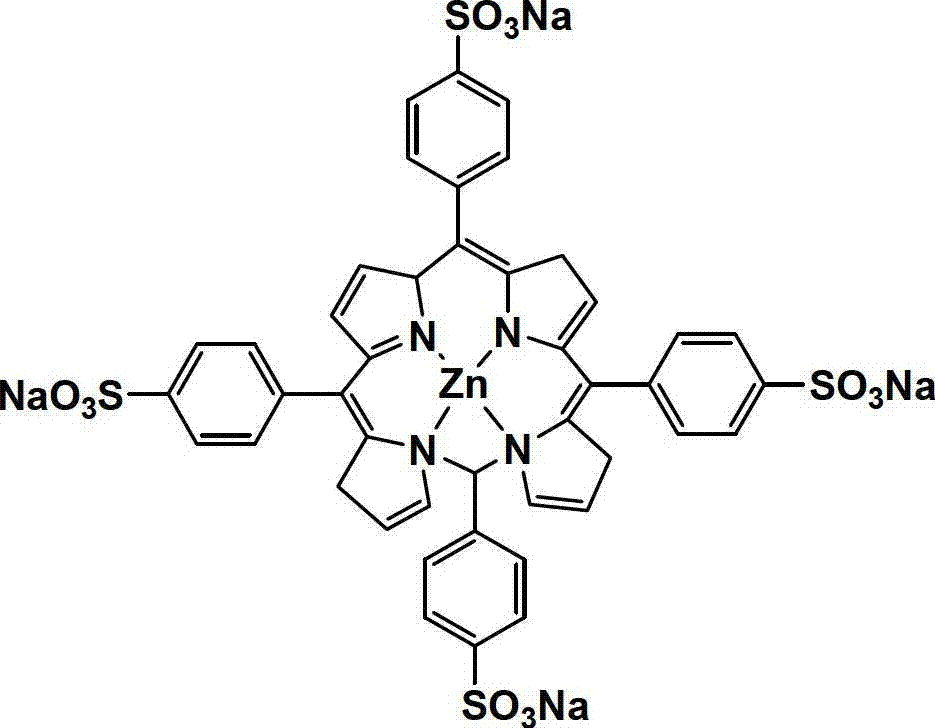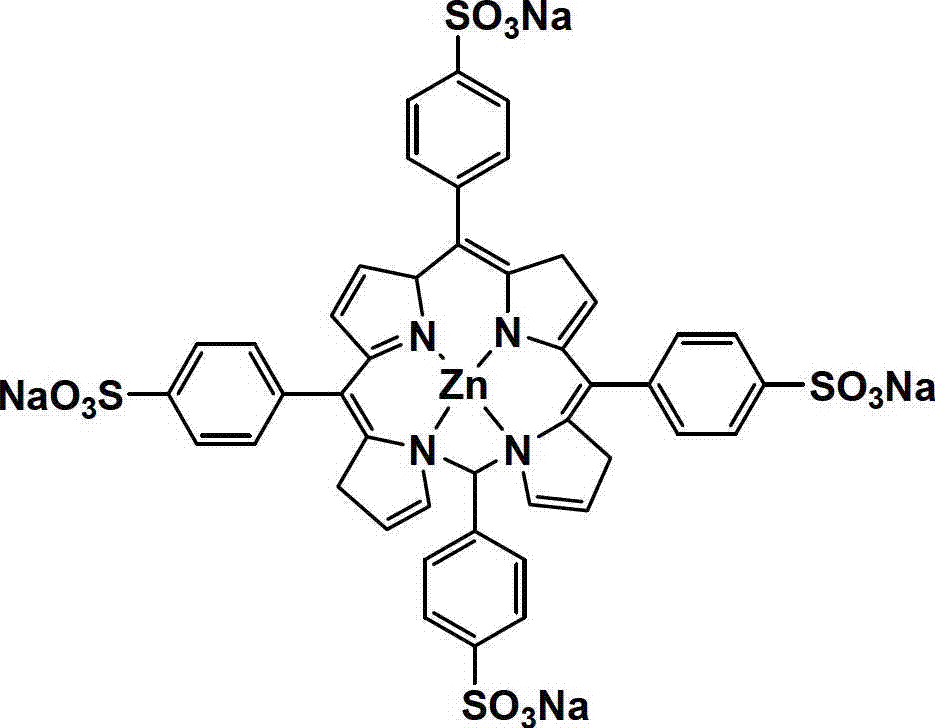Method for applying water-soluble tetra sodium sulfonate phenyl porphyrin metal complex to microcontact printing
A technology of micro-contact printing and metal complexes, applied in the field of modern electronics, to achieve the effect of reducing the use of organic solvents, low preparation costs, and exquisite patterns
- Summary
- Abstract
- Description
- Claims
- Application Information
AI Technical Summary
Problems solved by technology
Method used
Image
Examples
Embodiment 1
[0025] 1. The polyimide substrate was soaked in 1mol / L sodium hydroxide at 70°C for 30 minutes, then soaked in 1mol / L acid at 70°C for 15 minutes, then washed with water, and dried in vacuum at 60°C to obtain a carboxylated substrate.
[0026] 2. Dissolve 5,10,15,20-tetrakis[4-(3'-propoxypyridinium bromide)phenyl]porphyrin zinc in water to obtain 5,10,15 with a concentration of 0.2g / L, 20-sodium tetrasulfonate phenylporphyrin zinc aqueous solution.
[0027] 3. Soak the PDMS stamp in 5, 10, 15, 20-tetrasulfonate sodium phenylporphyrin zinc aqueous solution for 60s, take it out and put it in N 2 Dry in air flow for 30s. Put the PDMS stamp coated with 5,10,15,20-tetrakis[4-(3'-propoxypyridinium bromide salt)phenyl]porphyrin zinc aqueous solution on the carboxylated substrate, press lightly for 5s, The PDMS stamp pattern is transferred to the surface of the substrate to obtain a pattern-printed substrate.
[0028] 3. Soak the patterned substrate in 0.1g / L PdCl 2 In the solutio...
Embodiment 2
[0030] 1. Soak the polyimide substrate in 3mol / L sodium hydroxide at 70°C for 30 minutes, then soak it in 3mol / L acetic acid at 70°C for 15 minutes, then wash it with water, and dry it in vacuum at 60°C to obtain a carboxylated substrate.
[0031] 2. Dissolve 5,10,15,20-tetrakis[4-(3'-propoxypyridinium bromide)phenyl]porphyrin zinc in water to obtain 5,10,15 with a concentration of 0.3g / L. 20-sodium tetrasulfonate phenylporphyrin zinc aqueous solution.
[0032] 3. Soak the PDMS stamp in 5, 10, 15, 20-tetrasulfonate sodium phenylporphyrin zinc aqueous solution for 60s, take it out and put it in N 2 Dry in air flow for 30s. Cover the PDMS stamp coated with 5, 10, 15, 20-sodium tetrasulfonate phenylporphyrin zinc aqueous solution on the carboxylated substrate, press lightly for 5s, transfer the PDMS stamp pattern to the substrate surface, and obtain a printed pattern base.
[0033] 4. Soak the patterned substrate in 0.1g / L PdCl 2 In the solution for 10s, after taking it out, ...
Embodiment 3
[0035] 1. Soak the polyimide substrate in 5mol / L sodium hydroxide at 70°C for 30 minutes, then soak it in 5mol / L acetic acid at 70°C for 15 minutes, then wash it with water, and dry it in vacuum at 60°C to obtain a carboxylated substrate.
[0036] 2. Dissolve 5,10,15,20-tetrakis[4-(3'-propoxypyridinium bromide)phenyl]porphyrin zinc in water to obtain 5,10,15 with a concentration of 0.5g / L, 20-sodium tetrasulfonate phenylporphyrin zinc aqueous solution.
[0037] 3. Soak the PDMS stamp in 5, 10, 15, 2, the concentration is 0.5g / L. Soak the PDMS stamp in 5,10,15,20-tetrakis[4-(3'-propoxypyridinium bromide salt)phenyl]porphyrin zinc aqueous solution for 60s, take it out and put it under N 2 Dry in air flow for 30s. Cover the PDMS stamp coated with 5, 10, 15, 20-tetrasulfonate sodium phenylporphyrin zinc aqueous solution on the carboxylated substrate, press lightly for 5s, transfer the PDMS stamp pattern to the substrate surface, and obtain a printed pattern base.
[0038] 4. S...
PUM
 Login to View More
Login to View More Abstract
Description
Claims
Application Information
 Login to View More
Login to View More - R&D
- Intellectual Property
- Life Sciences
- Materials
- Tech Scout
- Unparalleled Data Quality
- Higher Quality Content
- 60% Fewer Hallucinations
Browse by: Latest US Patents, China's latest patents, Technical Efficacy Thesaurus, Application Domain, Technology Topic, Popular Technical Reports.
© 2025 PatSnap. All rights reserved.Legal|Privacy policy|Modern Slavery Act Transparency Statement|Sitemap|About US| Contact US: help@patsnap.com


